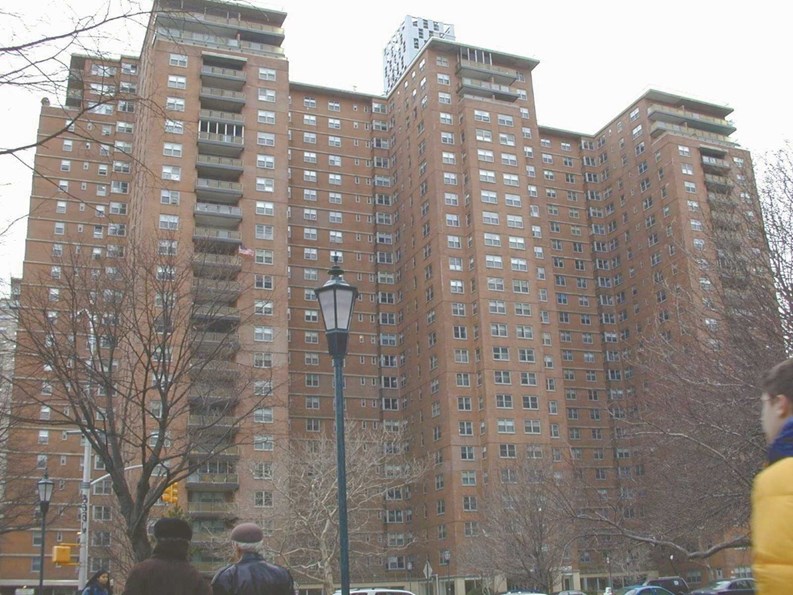Co-op and condo buildings don’t run themselves. Their owners and shareholders rely on board members to make important decisions about the buildings they live in, and board members count on their management companies to provide them with the information needed to make smart decisions.
For some buildings, a management company isn’t enough. Some co-ops and HOAs prefer to be self-managed—that is, to handle their own affairs by hiring a manager to run their building and their building only. This isn’t for everyone, but with the right team in place, a self-managed building can often save money and do more with their property.
Undivided Attention
“We handle everything in-house,” says Rochelle Captan, who’s been managing Amalgamated Warbasse Houses in Brooklyn for 30 years. “From the management and the bookkeeping department, maintenance department and security department, our own power plant. We do it with me as the manager, and I have an assistant and a staff of about 90 people.”
Amalgamated Warbasse is a large community, with 2,585 families, a power plant and a shopping center. A co-op of that size can benefit from being self managed. Captan says having more direct contact with the board of directors and handling almost everything regarding the building’s operations within (plumbing and electrical repairs being among the exceptions) is important for Amalgamated’s success.
“We don’t have the red tape of going through a management company,” Captan says. “It’s a day-to-day situation where I’m in touch with the board members as much as they need to talk to me…. I think it’s a more intimate relationship. I think the thoughts and desires of the [residents] are better-served because the person that’s here is the person.”
Brendan Keany, who manages the 2,820-unit Penn South co-op, located from 23rd to 29th Street between Eighth and Ninth Avenues in Manhattan, believes being self-managed helps his community do some interesting things.
“We generate our own electricity, completely devoid of Con Ed and have been since 1986,” Keany says. “We’re like a-city-within-a-city. We have 110 professional employees, an 800-spot parking lot on the property, approximately 20 retail ground floor spaces that we rent out, the Midtown Tennis Club, St. Vincent’s Clinic, and our own gym with over 500 members. The diversity of things you can get involved in are much greater when you are self-managed.”
No Middleman
In many ways, the duties of a manager in a self-managed building are similar to those of managers who work for management companies, except that their effort is put directly into the running of just one property. When asked what the board of a self-managed building should look for in a manager, Captan points out many of the characteristics needed by any good manager.
“They need someone who’s pretty strong,” she says. “Someone who will give [the board] the right advice, but not get angry if they decide to go in a different way. You need someone who can handle all the various people we have to handle: the engineers, the architects, the accountant, and dealing with the state division of housing.” Also key is being able to work with these people diplomatically while also doing it from a position of strength.
Self-managed buildings aiming to hire a manager must do their homework and make the right decision. Not only because of the responsibility the person will have, but also because solo managers tend to stay with buildings a long time. Captan has been with Amalgamated Warbasse for 30 years and recently signed a new three-year contract. She also mentions two or three other managers who have been with self-managed buildings for 10 years or more. “The people that I know have been on the job for a quite a while,” she says.
For self-managed buildings, it’s especially important to choose a manager capable of assessing bids for building maintenance and improvement projects, and hiring the right professionals for such jobs. Management companies usually have a list of reliable contractors they use for projects in their buildings, but when you are self-managed, you don’t have that experience behind you. It’s vital that your building’s manager has contacts and builds relationships with the professionals needed to keep the building up and running.
“I suggest that [managers] go by word of mouth and ask other boards about who they’ve used,” says Patricia Garbutt of Patricia A. Garbutt, PE, a professional engineering consulting firm in Manhattan. “As a consultant, I help educate people about any construction project—such as who they can trust, and how they can go about hiring someone.”
Is it Right for You?
While it may seem that a self-managed building is the way to go, especially when you look at the finances and money you can save by not paying steep management fees, it still isn’t for everyone.
“Self-managed doesn’t work for everybody,” says Keany. “The building community has to meet certain criteria. I would never recommend that a smaller building—300 or 400 units—to be self managed. There is economy of scale here. Because of our size, we can do so many more things that we would otherwise have to pay for in terms of services. For large buildings like ourselves, I think you get a much more hands-on approach with self-management. A smaller building wouldn’t get those benefits.”
You also have to make sure that you pay strict attention to everything. One of the most common mistakes in self-managed buildings is lack of oversight; something as simple as opening the mail, and watching for bills and checks can turn into a major problem if it’s not handled properly and with adequate transparency.
“The most common problems can be avoided if the board pays attention to all details closely,” Keany said.
Coming On Board
Most experts agree that having a top manager and keeping up with technology is important when self-managing a building.
Before working for Amalgamated Warbasse, Captan worked for a management company. She says the building took something of a chance when they hired her.
“Especially 30 years ago, at a time when women weren’t in jobs like this,” she says. “At the time it was pretty gutsy of these people. But they had some good information on me and I proved myself, I guess.”
For board members, being self-managed usually means having a manager who’s almost always available to you.
“It’s a direct contact,” Captan says. “I’m on the telephone, almost on a daily basis, with the president of the board and one or two of the other two board members. I feel it’s a person-to-person kind of relationship.”
Being on-site on a full-time basis means that Captan knows everything that goes on in the building, which can result in more knowledgeable conversations with contractors or whoever is being consulted about doing work in the development.
When asked if she takes a different approach with outside contractors, Captan says, “Perhaps because I have a clearer idea of exactly what’s happening because I’ve been watching it happen, or I’ve been informed by my maintenance people and all of that. I think I have more input with them.”
“We’ve been self-managed since 1962 and the level of service is the reason we have been successful,” says Keany. “A manager may need more training than in a management company and a proper computer system is key for self management.”
It’s About Relationships
That element of having a manager more available aside, a manager in a self-managed building essentially serves the same role as a management company—and the relationship between the board and the manager is similar as well. The board members count on the manager to keep them informed so that they can make an informed decision. There might be more interaction between the manager and board members because the manager (or her assistant) is on site and not busy talking to board members from other buildings.
“Relationships are very important, and one of the main things that people in a self-managed building will bring up about why it’s better than using a management company,” Garbutt says. “You might think people would just say because it’s cheaper, but there are other reasons as well.”
Captan says from her experience, board members working with management companies have to work harder because their manager isn’t as available.
“I think (board members in buildings that) have management companies are more involved because the person isn’t on-site constantly,” she says. “I’m here morning to night. I’m at all board meetings and all committee meetings. It’s a more intimate and more one-on-one decision.”
Anthony Stoeckert is a freelance writer and a frequent contributor to The Cooperator.







7 Comments
Leave a Comment